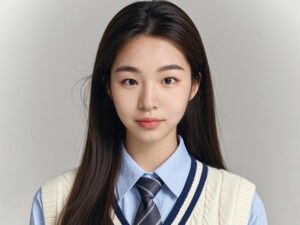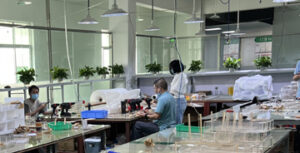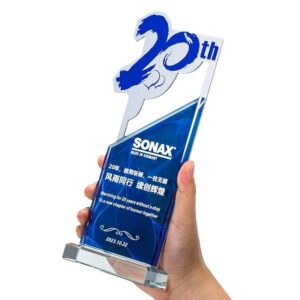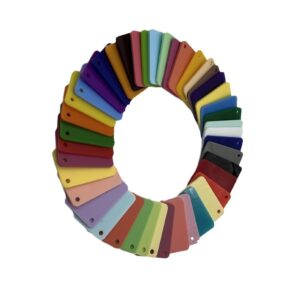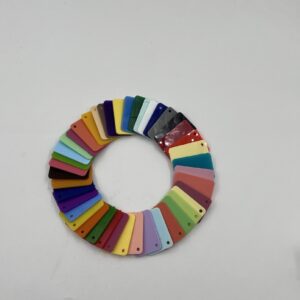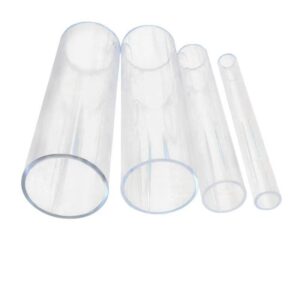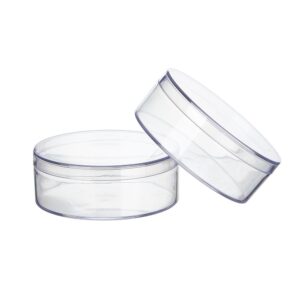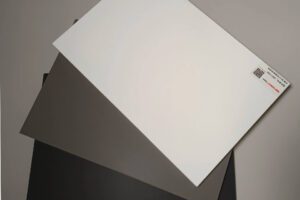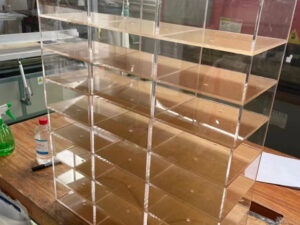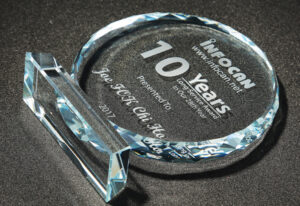Summary
Bubble rods, also known as illuminated tubes, are innovative design elements characterized by their vibrant transparency and unique lighting capabilities, primarily crafted from acrylic materials. Emerging from the mid-century modern design movement, these playful tubes have gained prominence in contemporary aesthetics for their ability to blend functionality with artistic expression in various settings, from residential interiors to large-scale public art installations. Their notable versatility and visual appeal have made them a staple in modern design, allowing designers to create dynamic environments that evoke whimsy and elegance.
The popularity of bubble rods is further fueled by advancements in LED technology, which enhance their luminous qualities and allow for customizable lighting effects, including color changes and patterns. This adaptability contributes to their use in both decorative and practical applications, ranging from illuminated furniture to sophisticated lighting solutions for lobbies and gardens. As a result, bubble rods have become synonymous with contemporary design trends, reflecting broader movements towards sustainability and innovation in materials.
However, the rise of bubble rods has also sparked discussions regarding their cultural significance, with associations of fragility and nostalgia linked to their bubble imagery. This has led to their integration into wellness and lifestyle trends, where they symbolize a desire for aesthetically pleasing and emotionally satisfying experiences. Furthermore, as market interest in bubble-inspired designs continues to grow, designers are pushing the boundaries of creativity by incorporating dynamic installations and modular configurations that adapt to evolving aesthetic preferences.
In summary, bubble rods represent a convergence of modern design, technological advancement, and cultural expression. Their ongoing evolution in both residential and commercial contexts underscores their significance as a trend in contemporary design, appealing to consumers seeking to enhance their environments with innovative and visually captivating elements.
Table of Contents
History
The concept of illuminated tubes, commonly referred to as bubble rods, has its roots in the evolution of design materials and aesthetics throughout the 20th century. Originally, the mid-century modern design movement (1945-1975) significantly influenced the use of synthetic materials, such as plastics and acrylics, which were embraced for their versatility and cost-effectiveness in furniture and home decor. This period marked a departure from traditional materials, paving the way for innovations in design that included illumination techniques.
With the post-war era’s focus on functionality and accessibility, illuminated elements became increasingly popular in home and commercial design. The incorporation of artificial lighting into everyday objects allowed for unique aesthetic expressions, further enhanced by the capabilities of new materials. Designers began to experiment with forms and light, creating dynamic pieces that were not only decorative but also functional. This trend saw the rise of various illuminated elements, including bubble rods, which added a playful and modern touch to interior spaces.
As technology progressed, the production methods for bubble rods evolved, utilizing extrusion techniques that allowed for consistent and precise manufacturing. These advancements made it possible to create lightweight, durable, and visually appealing illuminated tubes that could be used in a variety of applications, from art installations to everyday lighting solutions. The versatility of bubble rods has made them a staple in contemporary design, appealing to both residential and commercial markets.
Today, bubble rods continue to influence modern design trends, as their luminous qualities and adaptable nature allow for creative expressions in architecture and interior design. Their history reflects broader trends in design and material usage, demonstrating how innovation and aesthetic preferences evolve over time.
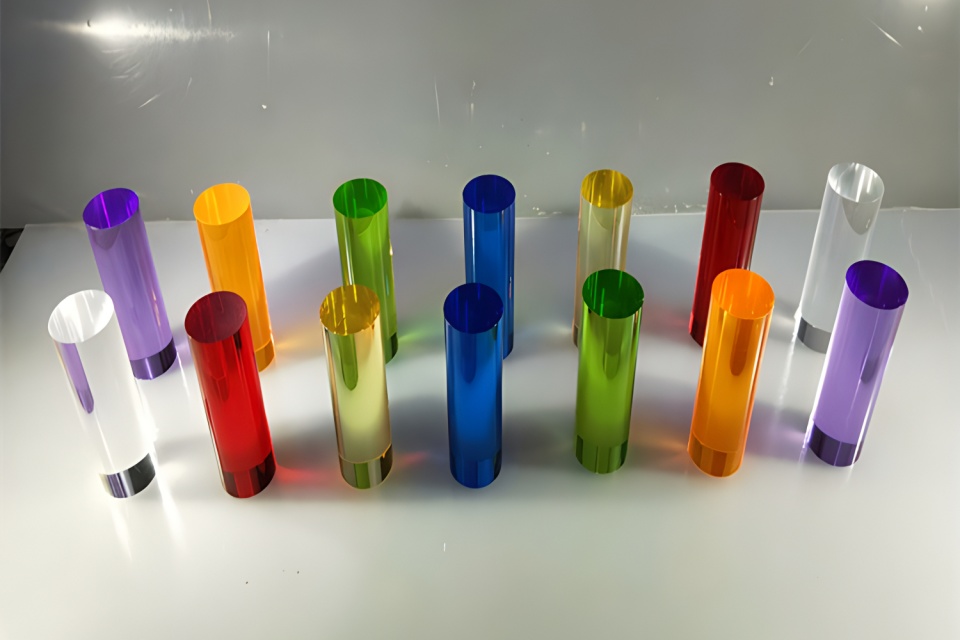
Characteristics
Material Properties
Bubble rods illuminated tubes are primarily made from acrylic, a versatile material known for its excellent transparency and durability. Acrylic exhibits a large coefficient of thermal and cold expansion, necessitating careful design considerations to accommodate temperature-induced expansion and contraction gaps. This characteristic makes acrylic suitable for various environmental conditions, particularly in outdoor installations where temperature fluctuations can occur.
Aesthetic Appeal
The visual impact of bubble rods is enhanced by their transparent properties and the ability to incorporate LED lights. By adding RGB LED modules, designers can create dynamic lighting effects that change colors and patterns, contributing to the aesthetic experience of the installation. The use of milky acrylic tubes further softens the emitted light, resulting in a gentler illumination effect that can enhance the overall ambiance of a space.
Structural Considerations
When designing with bubble rods, it is crucial to choose materials that not only meet aesthetic requirements but also ensure structural safety and weather resistance. The selection of appropriate acrylic grades and the integration of robust lighting systems can influence the longevity and stability of the installation. Additionally, bonding methods and surface treatments are essential for maintaining the integrity of the acrylic, especially when exposed to outdoor conditions.
Functional Features
Bubble rods can serve multiple functions beyond aesthetic appeal. For example, the incorporation of diffuser panels or light guide plates allows for even illumination across larger surfaces, creating a smooth, glare-free effect ideal for various design contexts, including wall installations or large glossy structures. This functionality, combined with the versatility of acrylic, makes bubble rods an appealing choice for contemporary design projects.
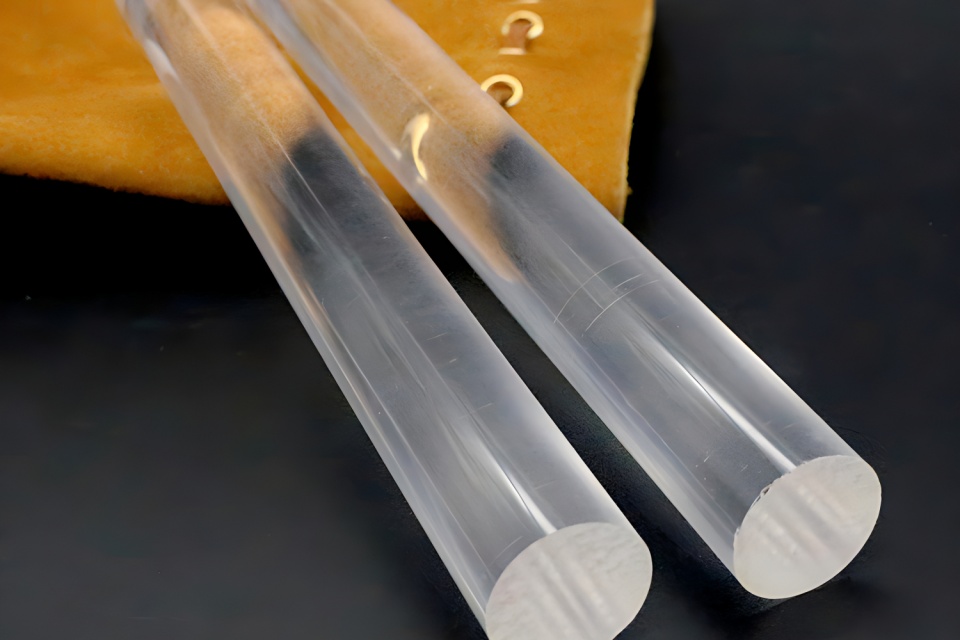
Applications
Interior Design
Bubble rods illuminated tubes have emerged as versatile elements in interior design, capable of adding both functionality and aesthetic appeal to various spaces. Their unique transparency and light guide effect allow for innovative installations that enhance the ambiance of interiors. These tubes can be utilized in a variety of settings, such as creating art installations that introduce a vibrant artistic atmosphere while serving practical purposes in space division and product display. Additionally, acrylic display stands, made from these materials, are commonly used in commercial environments to showcase products like cosmetics, jewelry, and electronics, effectively enhancing their perceived value.
Art Installations
The artistic potential of bubble rods illuminated tubes extends to large-scale outdoor installation art. Their ability to withstand various weather conditions while maintaining structural integrity makes them suitable for public art projects. By leveraging the inherent properties of acrylic materials, artists can create visually impactful installations that invite interaction and engagement from viewers, thus bridging the gap between art and everyday life. The unique combination of practicality and creativity exemplified by these installations reflects the evolving relationship between art and technology, emphasizing their significance in contemporary artistic expressions.
Lighting Solutions
In lighting design, bubble rods can serve multiple roles, from functional fixtures to decorative elements. They can be crafted into chandeliers or light columns, providing modern lighting solutions that elevate the atmosphere of spaces such as lobbies and gardens. The integration of RGB gradient light sources with acrylic tubes creates striking visual effects, guiding light evenly throughout the structure and generating a captivating ambiance. This versatility makes them ideal for both indoor and outdoor applications, including parks and courtyards, where they can significantly enhance the night scene while adding a personalized touch to the environment.
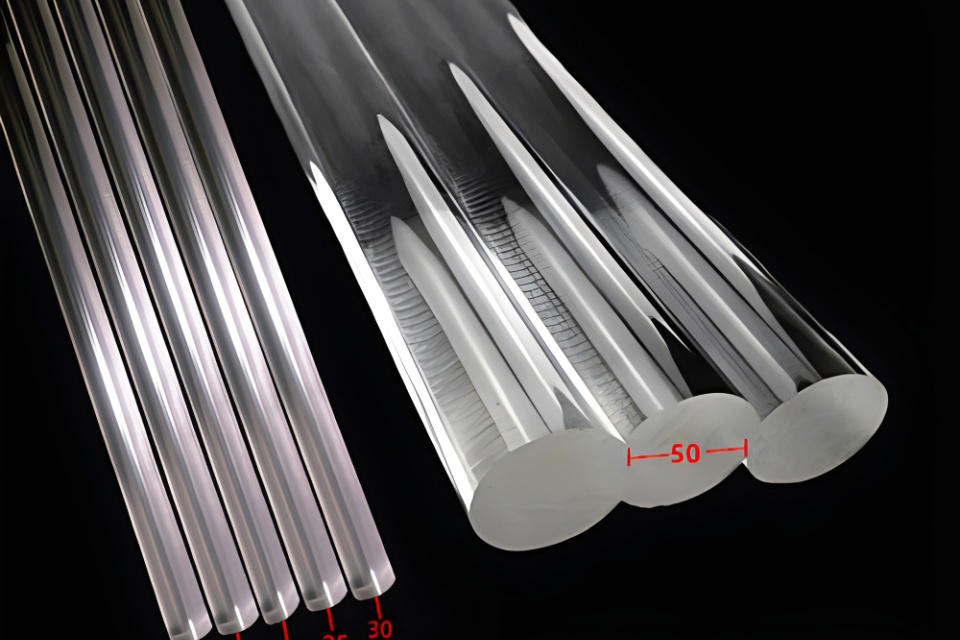
Popularity and Trends
Emergence in Contemporary Design
Bubble rods and illuminated tubes have surged in popularity within the realm of interior design, primarily due to their ability to create unique and dynamic visual effects. These materials are particularly favored for their lightness, transparency, and adaptability, allowing designers to craft modern and stylish spaces that evoke a sense of whimsy and elegance. The use of acrylic tubes and rods has become a defining characteristic of contemporary aesthetics, providing an ethereal quality to interiors that resonates with current design sensibilities.
Cultural Significance
Beyond their visual appeal, bubble imagery and the concept of lightness associated with these designs tap into deeper themes of fragility and nostalgia. This connection has led to their incorporation in wellness and lifestyle trends, as seen in bubble baths and sparkling beverages that promote relaxation and enjoyment. The cultural resonance of bubbles as symbols of ephemeral beauty aligns with the contemporary desire for experiences that are both aesthetically pleasing and emotionally satisfying.
Market Trends
The market has responded to this fascination with bubble-themed designs by integrating them into various products and branding strategies. Companies leverage the playful and innovative aspects of bubble rods and illuminated tubes in their marketing, conveying messages of purity and fun while appealing to consumers’ desires for sophisticated yet light-hearted experiences. This trend is reflected in online searches for keywords such as ‘bubble fashion trends’ and ‘bubble-inspired design,’ indicating a growing interest in this unique cultural phenomenon.
Innovations in Design
As the popularity of bubble rods continues to rise, designers are experimenting with dynamic installations that incorporate LED lighting and digital controls. These innovations allow decor to change colors and adapt to various moods, further enhancing the versatility of bubble-themed designs. Additionally, modular designs that permit easy reconfiguration are gaining traction, catering to the evolving needs of modern interior layouts. The fusion of innovative technologies with classic design principles sets new benchmarks in interior design, ensuring that bubble rods and illuminated tubes remain a prominent trend for years to come.
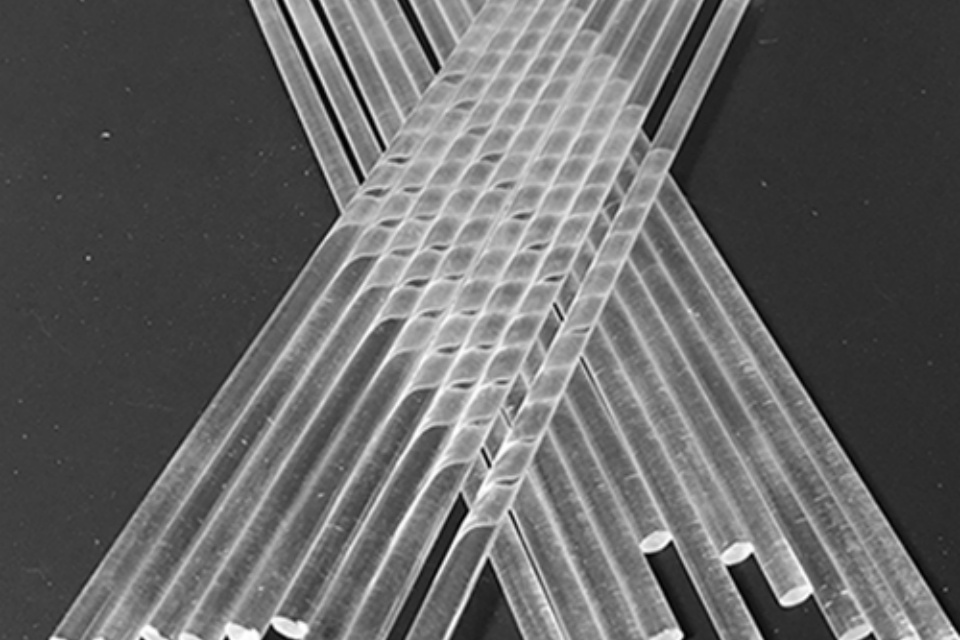
Comparison to Other Lighting Elements
Bubble rods illuminated tubes serve as a distinctive design element within the broader context of lighting solutions. While traditional lighting options such as incandescent and LED fixtures are widely utilized, bubble rods present unique characteristics that set them apart.
Efficiency and Heat Production
One notable advantage of bubble rods is their energy efficiency, especially when compared to incandescent bulbs, which emit up to 90% of their energy as heat. In contrast, LED lighting, often employed in bubble rod designs, produces minimal heat, ensuring lower operational costs and enhanced longevity. This efficiency makes bubble rods an attractive option for both aesthetic and functional applications.
Design Versatility
Bubble rods can be integrated into various environments, offering flexibility that traditional lighting fixtures may lack. While directional spotlights and wall-mounted fixtures are popular for emphasizing specific features, bubble rods add a dynamic and visually engaging element that can complement or enhance the overall design aesthetic. Their capacity to produce color-changing effects and interact with different materials further increases their versatility, making them suitable for modern art installations and architectural integrations.
Aesthetic Experience
The aesthetic experience associated with bubble rods differs from that of conventional lighting elements. Aesthetic experiences arise from the appreciation of their unique visual effects, contributing to psychological and physiological well-being. Unlike standard lighting solutions, which may focus primarily on illumination, bubble rods create an immersive environment that engages viewers on an emotional level, thus enhancing their overall experience.
Durability and Material Considerations
When evaluating durability, bubble rods often utilize materials such as acrylic, known for its high weather resistance and strong light transmission capabilities. This contrasts with traditional glass fixtures, which, while transparent, can be fragile and less adaptable to outdoor settings. The lightweight nature and chemical resistance of acrylic bubble rods also allow for easier handling and installation, making them preferable for both temporary and permanent applications.
Notable Designers and Brands
Prominent Brands in Bubble Lighting
Several brands have emerged as leaders in the bubble light market, showcasing unique designs and craftsmanship. One notable brand is Remshep, renowned for its stunning hand-blown glass chandeliers that draw inspiration from the iconic Chihuly style. Their collection features vibrant colors and intricate designs, making each piece a distinct work of art that enhances interior spaces.
In addition to Remshep, numerous other brands offer a variety of bubble light options, ranging from cozy wall lamps to modern bubble chandeliers. These brands prioritize quality and craftsmanship, ensuring that each lighting fixture not only provides illumination but also complements the decor of a room. The versatility of bubble lights allows them to seamlessly fit into diverse design aesthetics, whether vintage or contemporary.
Influence of Mid-Century Modern Design
The influence of mid-century modern design is evident in the bubble light trend, where the era’s embrace of man-made materials and bold aesthetics continues to shape contemporary design choices. Despite a growing focus on natural materials and sustainable practices, the essence of mid-century modern still permeates the bubble light market, reflecting an appreciation for both form and function.
Emerging Trends and Design Philosophy
Current trends in interior design, such as biophilia and neuroaesthetics, have further enhanced the appeal of bubble lights. These trends emphasize the importance of incorporating natural elements and understanding the psychological impact of design, leading to spaces that are both inviting and reflective of personal tastes. Designers and brands are responding to consumer demand for ‘experiential goods,’ which enhances the overall ambiance and encourages a more engaging living environment.
By combining aesthetic appeal with functional design, bubble lights have solidified their place as trendy design elements in modern interiors, allowing homeowners to express their individuality while creating welcoming spaces.

